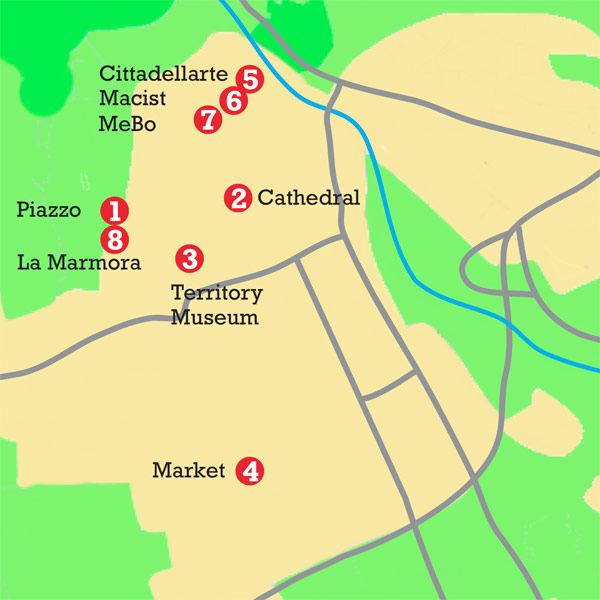What to do in Biella and province
To spend a weekend in the province of Biella or more days, what can you do? Biella offers a variety of interesting experiences that can satisfy different preferences and interests: Get lost in the cobbled streets of the historic center, visit its museums, go hiking in the surroundings, go shopping, or savor the local cuisine.
With its combination of history, culture, nature, and gastronomy, Biella offers a complete experience for visitors looking for a weekend or even an unforgettable longer vacation.
The Piazzo district
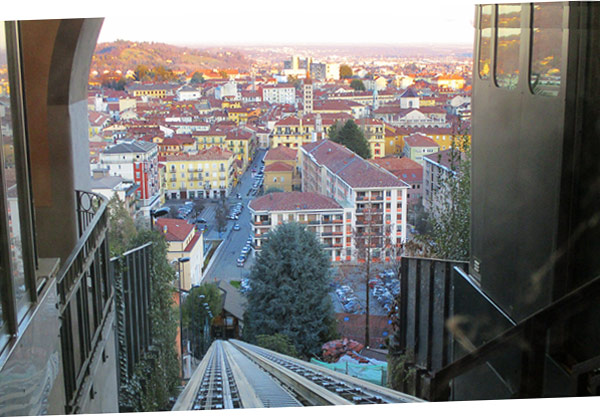
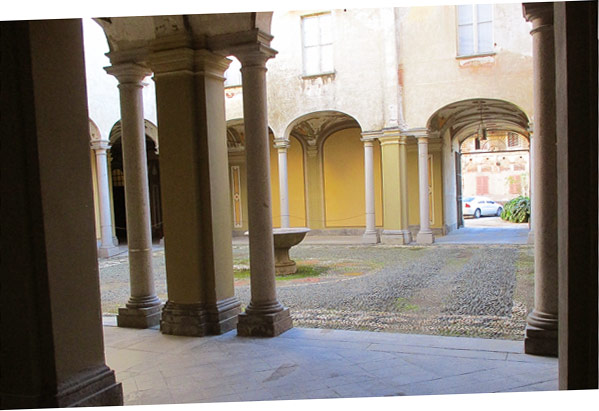
Located on the hill overlooking the city, the Piazzo district is considered the historical heart of Biella.
Bars, restaurants, and small shops on the main street frame it. This village, still characterized by the scenic Piazza Cisterna, retains all its history taking you back in time.
Absolutely worth a visit! During the day it’s not very crowded, while in the evening it comes to life, with everything lighting up.
You can reach it on foot, with a picturesque funicular inaugurated in 1885 (free), or by elevator. It is not recommended to drive up as parking spaces are very limited.
St. Stephen’s Cathedral
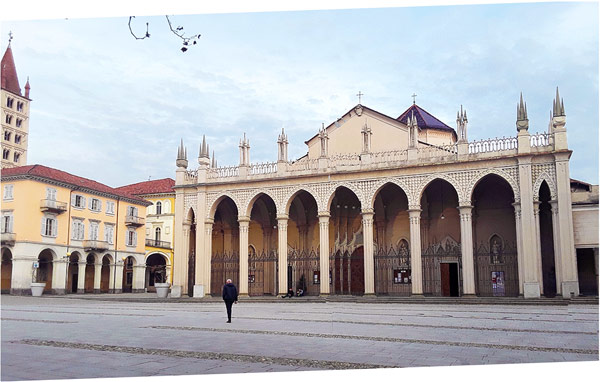
The current cathedral replaced the Church of Santo Stefano, built in 1402 following a vow to the Madonna di Oropa for having avoided the plague of 1399.
Later, the church was demolished, preserving only the bell tower.
In 1772, the new cathedral, now the episcopal seat, was built and has since undergone several expansions.
Along the right aisle there are notable frescoes. The original Romanesque bell tower, whose construction date remains unknown but is presumed to date back to the 11th century, rises imposingly to 52 meters in height, considerable for the time.
Located about a hundred meters from the cathedral, this location derives from the fact that the bell tower of Santo Stefano is the only remaining evidence of the ancient church, later demolished.
In front of the cathedral, there is a vast square.
The baptistery, well preserved, is located next to the cathedral and can only be visited upon request.
The Territory Museum of Biella
The museum preserves the rich history and culture of the Biella region.
It offers visitors an engaging experience through interactive exhibits, historical documents, archaeological finds, and works of art.
Inside its halls, visitors can explore the different stages of the development of the Biella territory, from prehistory to contemporary times. See here for more information.
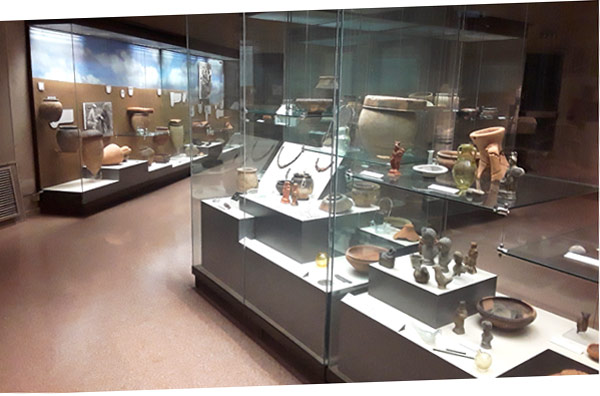
Archaeological section
In the rich heritage of the province of Biella, there is a large and valuable section hosting numerous archaeological finds discovered in the local area.
Paleontological section
Through the use of three-dimensional reconstructions, an attempt is made to bring to life the reality of millions of years ago, in an era when landscapes were radically different from today’s.
The marine-origin rocks that emerge from the bed of the Cervo stream contain fossils that offer a fascinating spectacle.
Historical-artistic section
Each piece on display tells the story of the Biella territory, from the sculptures of the green stone lions of Oropa to the frescoes from some churches, and then explores the paintings of the 19th and 20th centuries.

Pre-Columbian section
Thanks to the Biella collector Ugo Canepa, it is possible to admire artifacts from the Andean area predating the arrival of the conquistadors.
Among these, stand out an image of a shaman, fertility symbol statuettes, and a rare object resembling an ancient ball game.
Egyptian section
An Egyptian section is exhibited with statuettes, amulets, small bronzes, and some of the most significant symbols.
The Eye of Horus, the scarab of rebirth, etc…
The exhibition is further enriched with a mummy belonging to a woman, probably a priestess.
What else is there to see in the province of Biella?
Piazza Falcone Market
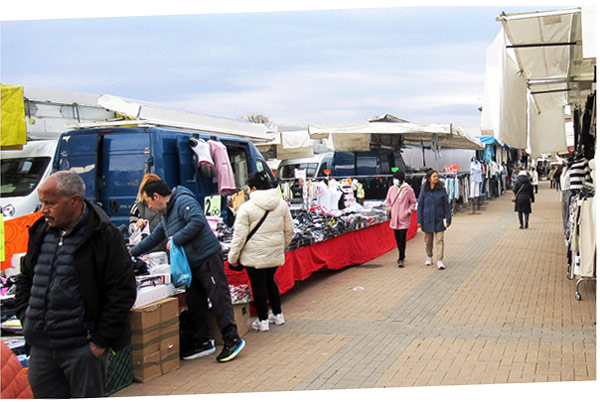
We recommend taking a stroll to the large provincial market of Biella, which takes place three times a week in Piazza Falcone, on Mondays (7:30 AM to 2:00 PM), Thursdays (7:30 AM to 2:00 PM), and Saturdays (7:30 AM to 7:00 PM).
You can find everything there, from fruits and vegetables to meat, fish, cheeses, sweets, flowers, handicrafts, and clothing. Is highly appreciated by the people of Biella.
It’s an ideal place not only for shopping but also for savoring genuine and quality local products, while having direct contact with the producer who can offer you the best advice.
Cittadellarte
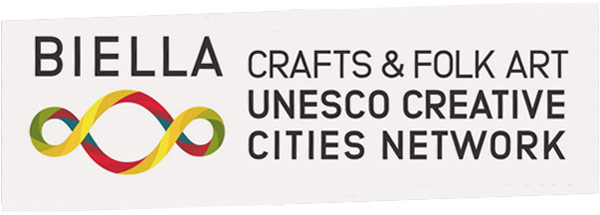
An engaging experience discovering the artworks of Michelangelo Pistoletto, an Italian artist of great charm and vision.
Macist
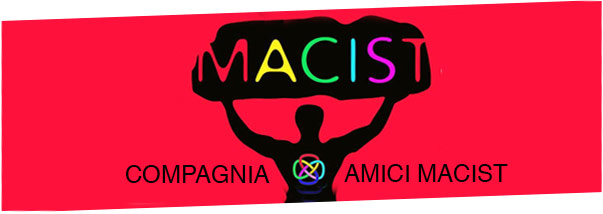
The origin of this Contemporary Art museum lies in the idea of Master Omar Ronda, supported by the sensitivity of various collectors and numerous internationally renowned artists.
Here visitors can immerse themselves in both permanent and temporary exhibitions, exploring contemporary art in its most authentic and varied forms, without being limited by specific trends or affiliations.
MeBo – Menabrea Botalla Museum
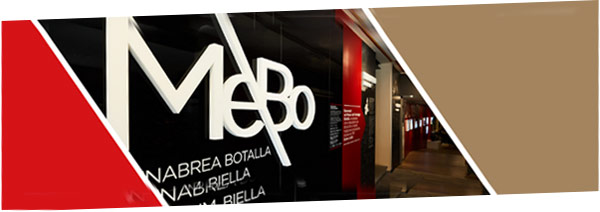
Casa Menabrea welcomes beer enthusiasts, giving them an unparalleled experience to dive into the history of Italy’s oldest brewery. Here, through machinery, tools, documents, photographs, and other artifacts, visitors can embark on a brief journey through time, starting in 1846 and continuing with passion to the present day.
Casa Botalla, in the heart of the Botalla cheeses, invites visitors to discover a story rich in quality, flavors, and authentic values. Since 1947, this tradition has spread the true taste of Piedmont around the world, keeping alive the passion for local products and their roots.
Palazzo La Marmora

A historic residence from the 16th century located in the historic district of Biella. Today the palace and its Renaissance garden are visitable for a fee and also available for elegant private events, as well as being the venue for exhibitions and cultural activities.
Our tips:
Where to enjoy typical cuisine
Where to eat at the Piazzo

